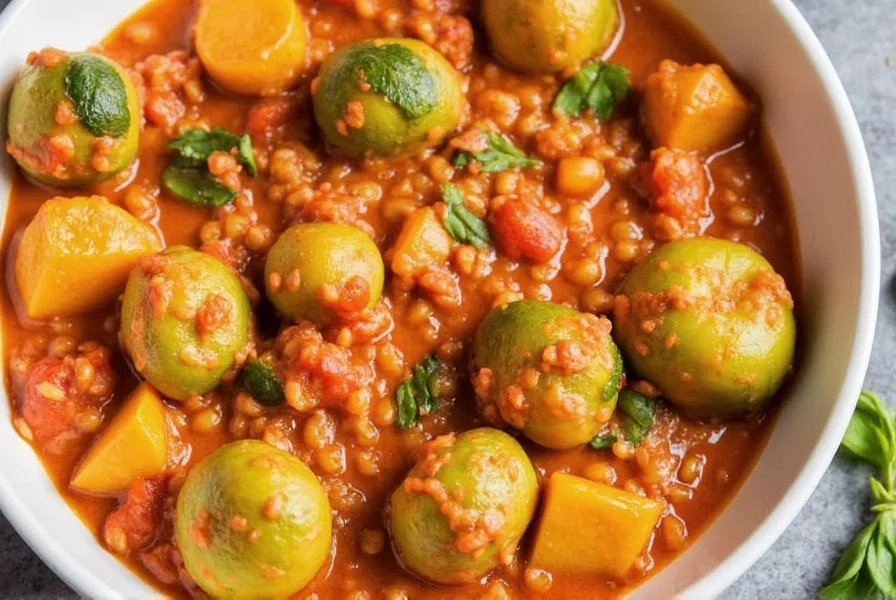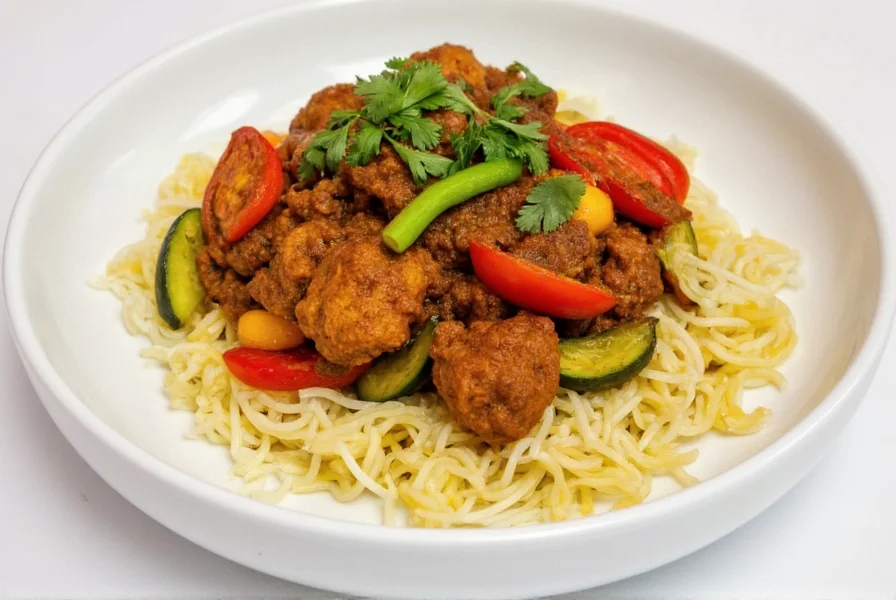When exploring Indian cuisine, understanding which vegetables harmonize with classic dishes like tikka masala elevates your culinary experience. This beloved dish features a rich, creamy tomato-based sauce with aromatic spices that pairs exceptionally well with specific vegetables that can withstand cooking while absorbing flavors.
Top Vegetable Choices for Tikka Masala
Certain vegetables work particularly well with tikka masala due to their texture, flavor profile, and traditional use in Indian cooking. The best vegetables for tikka masala maintain their structure while soaking up the complex spices without overpowering the delicate balance of the sauce.
Cauliflower: The Classic Choice
Cauliflower stands as the premier vegetable pairing for tikka masala. Its firm texture holds up well during cooking, and its mild flavor readily absorbs the rich tomato and cream sauce. In traditional Indian cooking, gobi (cauliflower) tikka masala represents a beloved vegetarian adaptation of the classic dish. When preparing cauliflower for tikka masala, cutting florets to uniform size ensures even cooking and optimal sauce absorption.

Potatoes: Comforting and Substantial
Firm potatoes, particularly Yukon Gold or red potatoes, provide excellent substance to tikka masala dishes. Their starch content helps thicken the sauce while their neutral flavor complements rather than competes with the complex spice profile. Many authentic Indian restaurants include potatoes in their vegetarian tikka masala preparations, creating a more substantial meal that satisfies without meat.
Bell Peppers and Onions: Flavor Enhancers
Sweet bell peppers and onions serve dual purposes in tikka masala preparations. When cooked properly, they develop natural sweetness that balances the tanginess of the tomato base. These vegetables work exceptionally well when marinated and grilled before adding to the sauce, creating what's known as tandoori vegetables tikka masala. The charring from grilling adds depth that enhances the overall flavor profile.
Vegetable Preparation Methods for Optimal Results
How you prepare vegetables significantly impacts their compatibility with tikka masala sauce. The following methods yield the best results when pairing vegetables with this classic Indian dish:
| Vegetable | Recommended Preparation | Why It Works |
|---|---|---|
| Cauliflower | Par-cook or roast before adding to sauce | Prevents overcooking while allowing flavor absorption |
| Potatoes | Boil until partially cooked before adding | Maintains shape while absorbing sauce flavors |
| Spinach | Add at the very end of cooking | Preserves texture and vibrant color |
| Peppers & Onions | Grill or roast before incorporating | Develops sweetness and adds smoky depth |
Vegetables to Avoid with Tikka Masala
While many vegetables work well with tikka masala, certain options create texture or flavor conflicts. Watery vegetables like zucchini or cucumbers break down too quickly in the sauce, creating an undesirable consistency. Strongly flavored vegetables such as broccoli or Brussels sprouts can overpower the delicate spice balance. When selecting vegetables that go well with tikka masala, prioritize those with neutral flavors and firm textures that maintain integrity during cooking.
Serving Suggestions for Vegetable Tikka Masala
The traditional way to serve vegetable tikka masala follows Indian dining customs. Basmati rice provides the perfect neutral base that allows the vegetable and sauce flavors to shine. For authentic presentation, consider these serving recommendations:
- Pair with freshly made naan bread for dipping
- Add a side of cucumber raita to balance the spices
- Garnish with fresh cilantro just before serving
- Serve with a wedge of lime for brightness
When exploring vegetarian tikka masala vegetable options, remember that the sauce itself remains consistent—the vegetables simply replace the traditional chicken or paneer. This makes vegetable tikka masala an excellent introduction to Indian cuisine for those seeking meat-free alternatives without sacrificing authentic flavor.
Common Mistakes to Avoid
Many home cooks make errors when pairing vegetables with tikka masala that compromise the final dish. Overcooking vegetables creates mushy textures that don't complement the rich sauce. Adding vegetables at the wrong stage of cooking prevents proper flavor absorption. Using pre-cut frozen vegetables often results in excess moisture that thins the sauce. Understanding which vegetables absorb tikka masala sauce best helps avoid these common pitfalls.
For optimal results, add heartier vegetables like potatoes and cauliflower early in the cooking process, while delicate greens like spinach should be incorporated at the very end. This timing ensures each vegetable maintains its ideal texture while maximizing flavor absorption from the aromatic sauce.
Creating Authentic Vegetable Tikka Masala
When preparing vegetable tikka masala at home, selecting the right combination creates a balanced dish. The most successful recipes typically feature 3-4 vegetable types to provide textural variety without overwhelming the palate. A classic combination includes cauliflower, potatoes, and bell peppers, with spinach added at the end for color and nutrition.
For those exploring traditional vegetable pairings for tikka masala, remember that Indian cuisine emphasizes balance—between textures, flavors, and cooking methods. The vegetables should enhance rather than dominate the dish, allowing the complex spice profile of the tikka masala sauce to remain the star.

Frequently Asked Questions
Can I use frozen vegetables in tikka masala?
While fresh vegetables yield the best results, you can use frozen vegetables in tikka masala with proper preparation. Thaw and thoroughly dry frozen vegetables before adding them to prevent excess moisture from thinning your sauce. Root vegetables like potatoes and cauliflower work better frozen than watery vegetables like zucchini.
How do I prevent vegetables from becoming mushy in tikka masala?
To maintain vegetable texture in tikka masala, par-cook firmer vegetables like potatoes and cauliflower before adding them to the sauce. Add delicate vegetables like spinach during the last 2-3 minutes of cooking. The key is understanding which vegetables absorb tikka masala sauce best without breaking down—cauliflower and potatoes hold their shape better than more delicate options.
What vegetables work best for vegan tikka masala?
For vegan tikka masala, cauliflower, potatoes, bell peppers, and spinach create an excellent vegetable combination. These vegetables absorb the rich tomato-based sauce beautifully while providing varied textures. When making vegetarian tikka masala vegetable options vegan, ensure your sauce uses coconut milk instead of dairy cream for authenticity.
Can I add vegetables directly to store-bought tikka masala sauce?
Yes, you can add vegetables to store-bought tikka masala sauce, but preparation matters. For best results, cook firmer vegetables separately before adding them to the sauce to prevent overcooking. Understanding what vegetables go well with tikka masala helps you select options that complement rather than compete with the pre-made sauce's flavor profile.
How long should vegetables cook in tikka masala sauce?
Cooking time varies by vegetable. Heartier vegetables like potatoes and cauliflower need 15-20 minutes simmering in the sauce to absorb flavors properly. Softer vegetables like bell peppers require 8-10 minutes, while leafy greens like spinach only need 2-3 minutes at the end of cooking. This knowledge helps when determining which vegetables go with tikka masala for optimal texture and flavor absorption.










 浙公网安备
33010002000092号
浙公网安备
33010002000092号 浙B2-20120091-4
浙B2-20120091-4